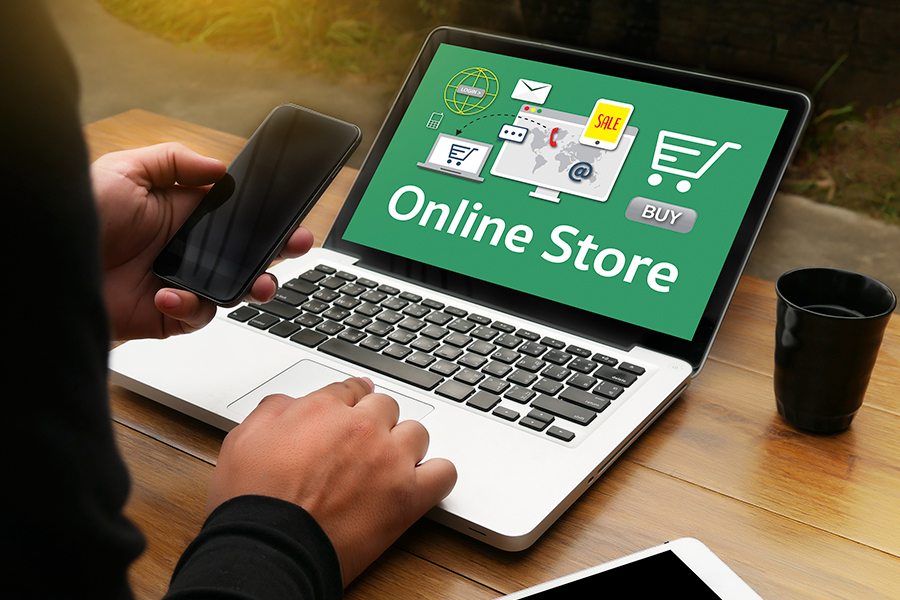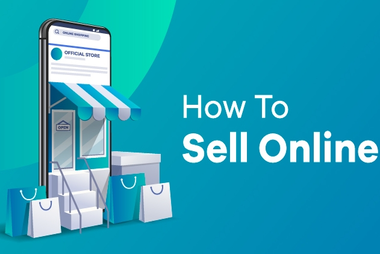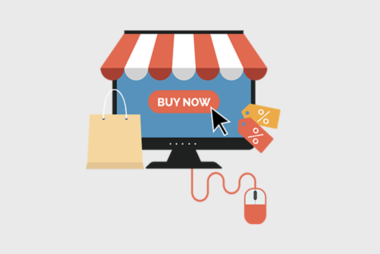Selling products online can be a game-changer, but for beginners, it can also seem daunting. In this guide, we will walk you through the essential steps and tips on how to sell online. From choosing the product and setting up your store to marketing your products, this guide is designed to help you navigate the eCommerce world with confidence. Whether you’re launching a small side hustle or dreaming of building a thriving online business, these insights will set you on the path to success.
How to Start Selling Products Online
Starting to sell products online can be a rewarding venture, but it requires careful planning and execution. Here’s a step-by-step guide to help you get started:
Identify Your Interests and Skills
Start by listing out your hobbies, interests, and passions. Selling products related to your interests will keep you motivated and engaged. Reflect on your past experiences and professional skills that could give you an edge in certain niches. Consider any special skills or expertise you have. For example, if you have a background in fitness, a niche related to fitness equipment or wellness could be a good fit. Leveraging your skills can make it easier to create content, offer better customer service, and establish credibility.
Conduct Market Research
To conduct effective market research, start by analyzing market trends using tools like Google Trends to identify consistent demand over time, ensuring long-term viability rather than short-lived trends. Perform competitor analysis by studying potential competitors’ websites, product offerings, and marketing strategies, utilizing tools like SEMrush and SimilarWeb to analyze their traffic sources and keywords. Evaluate demand by checking online marketplaces like Amazon and eBay to identify best-selling products in various categories, and examine product reviews and ratings to understand customer satisfaction and market gaps. Additionally, use keyword research tools such as Google Keyword Planner to find search volumes for relevant keywords, focusing on high search volume keywords with lower competition to pinpoint opportunities.
Identify Your Target Audience
Define customer demographics by considering factors such as age, gender, location, income level, and education, using data from sources like Statista and government databases. Understand your target audience’s psychographics, including interests, values, lifestyle, and purchasing behavior, and create customer personas to represent different segments. Identify common pain points by examining online forums, social media groups, and customer reviews to gather insights.
Build your online store

1. Establish Your Own Online Store
Creating your own eCommerce website allows you to have full control and flexibility over the shopping experience. Platforms such as WordPress, Wix, and Shopify provide straightforward, DIY solutions for building your site.
Pros:
- Complete control over the design, features, and functionality of your store.
- The ability to scale and expand the website as your business grows without limitations.
- Create a unique and distinctive brand identity that sets you apart from competitors.
Cons:
- Requires technical knowledge or hiring a developer for setup and maintenance.
- You need to boost your website’s traffic and execute SEO strategies on your own.
2. Utilize Established eCommerce Platforms
If you want to set up an online store faster, you can join established e-commerce platforms such as Amazon, eBay, and Etsy.
Pros:
- Immediate access to a vast and established customer base.
- Benefit from the trust and credibility of well-known marketplaces.
- You don’t have to worry too much about technical and logistical aspects.
Cons:
- Limited control over store design and branding.
- Marketplaces charge fees for listing and selling products, which can cut into profits.
- High competition with other sellers offering similar products.
Set Up Payment and Shipping
Setting up payment and shipping processes is crucial for online stores. Start by choosing reputable payment gateways like PayPal or Stripe, ensuring they support your business needs and provide secure transactions. Implement SSL certification to protect customer data. Offer diverse payment options to accommodate customer preferences. For shipping, select reliable carriers based on speed, cost, and coverage. Calculate shipping rates based on package details and destination. Clearly define shipping policies and provide tracking information to customers. Streamline order fulfillment with efficient packaging and automate return processes to enhance customer satisfaction and operational efficiency. Regularly update these processes to optimize customer experience and business operations.
Marketing and Promotion
Branding
Develop a strong brand identity that resonates with your target audience. This includes your brand name, logo, colors, fonts, and overall brand voice.
Digital Marketing
Search Engine Optimization (SEO):
Optimize your website content and product pages for relevant keywords to improve organic search engine rankings. Use tools like Google Keyword Planner, SEMrush, or Ahrefs to research keywords and monitor SEO performance.
Content Marketing:
Create valuable and engaging content related to your products or industry. This can include blog posts, how-to guides, product reviews, and videos. Share content on your blog, social media channels, and email newsletters to attract and educate potential customers.
Email Marketing:
Build an email list of subscribers and send targeted campaigns to promote new products, discounts, and special offers. Personalize emails based on customer preferences and behaviors to increase engagement and conversions.
Social Media Marketing:
Establish a presence on relevant social media platforms (Facebook, Instagram, Twitter, LinkedIn) where your target audience spends time. Create compelling posts, stories, and ads to showcase your products, engage with followers, and drive traffic to your website.
Paid Advertising:
Use pay-per-click (PPC) advertising platforms like Google Ads or social media ads (Facebook Ads, Instagram Ads) to reach a broader audience. Set specific targeting criteria based on demographics, interests, and online behavior to maximize ad effectiveness.
How to Grow Online Sales?
Selling through live streaming
Live streaming has become a powerful tool for engaging customers and driving sales. By using advanced live streaming tools, it will be easier for you to master live streaming. BocaLive is an AI live streaming tool that allows you to live stream at the lowest cost. Not only does it allow you to stream and interact with viewers using AI avatars instead of real people, but it also enables you to push your live stream to multiple platforms, allowing you to get more exposure. With it, you don’t have to go through the trouble of writing live scripts, because its built-in AI can generate copy for you in one piece.

Improve Customer Experience
A seamless and satisfying customer experience is crucial for converting visitors into loyal customers. Here are some ways to enhance it:
- User-Friendly Website: Ensure your website is easy to navigate, with clear categories, search functionality, and a straightforward checkout process.
- Customer Support: Provide multiple support options such as live chat, email, and phone support. Promptly addressing customer queries and issues can improve satisfaction.
- Personalization: Use data to personalize the shopping experience. Offer personalized product recommendations based on browsing history and previous purchases.
- Responsive Design: Optimize your website for mobile devices to ensure a smooth experience for mobile shoppers, who make up a significant portion of online buyers.
Expand Your Sales Channels with Social Media
Social media platforms offer a vast audience and numerous tools for promoting and selling products. Here’s how to maximize their potential:
- Social Commerce: Use features like Instagram Shopping, Facebook Shops, and Pinterest Buyable Pins to sell products directly through social media platforms.
- Engagement: Regularly post engaging content, such as product photos, videos, customer testimonials, and behind-the-scenes looks at your business.
- Advertising: Run targeted ad campaigns to reach specific demographics and interest groups. Use social media analytics to track performance and refine your strategy.
- Influencer Marketing: Collaborate with influencers who align with your brand. Their endorsements can significantly increase your reach and attract new customers.
Optimize Your Website
An optimized website is essential for converting visitors into customers. Focus on the following areas:
- Speed: Ensure your website loads quickly. Slow loading times can lead to high bounce rates and lost sales.
- SEO: Optimize your website for search engines to increase organic traffic. Use relevant keywords, create high-quality content, and build backlinks.
- A/B Testing: Conduct A/B tests on different elements of your website, such as headlines, images, and CTAs, to determine what works best for driving conversions.
- Security: Implement robust security measures, including SSL certificates and secure payment gateways, to protect customer data and build trust.
Offer Incentives and Discounts
Incentives and discounts are effective tools for attracting and retaining customers. Here’s how to use them strategically:
- Limited-Time Offers: Create a sense of urgency by offering discounts for a limited time. Flash sales and countdown timers can motivate customers to act quickly.
- First-Time Buyer Discounts: Encourage new customers to make their first purchase by offering a special discount.
- Loyalty Programs: Reward repeat customers with loyalty points, exclusive discounts, or early access to new products.
- Bundling: Offer discounts on product bundles to increase the average order value. Customers may be more inclined to purchase a set of products at a reduced price.
FAQs for Selling Online
What is the best site to sell products online?
The best site to sell products online depends on your specific needs, but Shopify stands out for its ease of use, scalability, and robust features. It offers a comprehensive suite of tools for setting up and managing an online store, including customizable templates, secure payment gateways, and extensive app integrations. Shopify’s strong SEO capabilities, 24/7 customer support, and seamless integration with social media and marketplaces make it ideal for businesses of all sizes, from startups to large enterprises.
Which product most sell on online?
The products that sell most online typically include electronics such as smartphones, laptops, and accessories due to their high demand and constant technological advancements. Fashion items like clothing, shoes, and accessories also rank high, driven by seasonal trends and a wide consumer base. Health and beauty products, including skincare, cosmetics, and supplements, appeal to a broad audience interested in personal wellness. Home and kitchen products, such as home decor, kitchen gadgets, and furniture, also see significant online sales as consumers increasingly shop for convenience and variety from the comfort of their homes.
The Final Word
I believe that through the above detailed introduction, you have a clear understanding of how to sell online. Everything is easy to start with, but hard to persevere. If you have made up your mind, used the tips we have given, and made steady progress towards your goal, you will be able to succeed!





Recent Comments